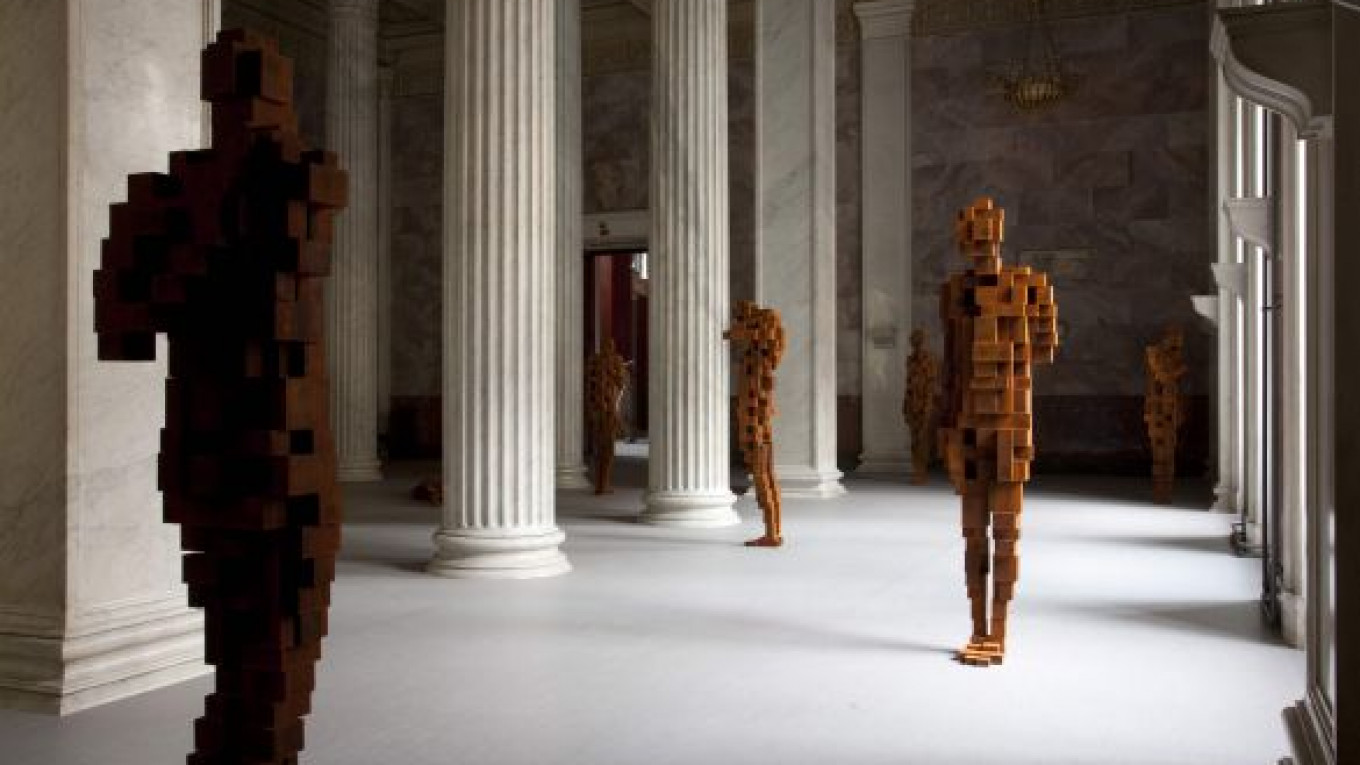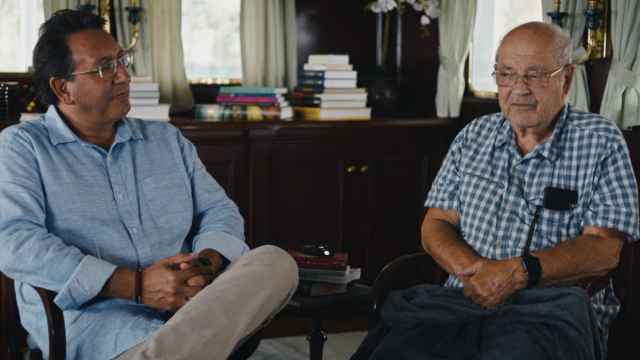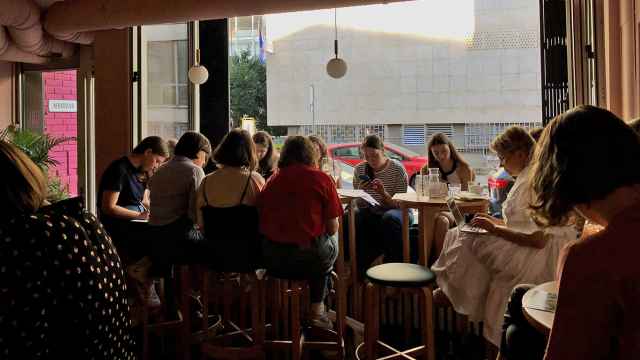St. Petersburg — At one point in the film adaptation of Evelyn Waugh’s “The Loved One,” the hapless hero finds himself alone in the presence of a marble statue of a beautiful nymph. Giving in to temptation, he steals a surreptitious kiss.
A new exhibition at the State Hermitage Museum, which, quite literally, brings classical sculptures down to the same level as the viewer, may well entice some art lovers to indulge in a bit of transgressive behavior of their own.
Russia’s biggest museum has allowed British sculptor Antony Gormley to sink the plinths of nine classical sculptures into the gallery floor, offering a fresh perspective on some familiar works. In order to achieve the effect without damaging the museum’s historic parquet, a temporary floor has been built at the level of the statues’ feet.
In addition to the unprecedented permission to relocate precious objects from the museum’s collection, he is also the first contemporary artist to be exhibited within the precincts of the Ancient Art galleries. For someone whose work is dismissed out of hand by some critics, it is a testament to his standing with the Hermitage, which agonizes over every nail driven into its hallowed walls.
Born in 1950 to a wealthy London family, the artist studied anthropology at Cambridge before turning to sculpture in the 1980s. He rose to prominence following an important show curated by Nicholas Serota at the Whitechapel Gallery before going on to win the Turner Prize in 1994.
Part of a circle of British sculptors who emerged in the 1980s and included Tony Cragg, Richard Deacon and Anish Kapoor, Gormley is probably best-known for his monumental sculpture “Angel of the North,” a 20-meter-tall steel figure with the outstretched wings of an airplane overlooking a motorway in Gateshead, England. For the past 25 years, Gormley has populated landscapes around the world, both urban and rural, with replicas cast from his own body.
Arguably Britain’s most famous living sculptor, Gormley’s popularity has been both a blessing and a burden. Either because of their scale, or their sheer numbers, his works rarely fail to attract attention, drawing equal amounts of condemnation and praise. The artist is regularly derided by connoisseurs for whom the ease with which his work is accepted signifies a facile project without much edge.
The general public, however, has embraced the artist along with his legion of sculpted surrogates and welcomed them into the community, sometimes dressing them up and including them as part of their everyday lives.
Earlier this year, a particularly uninformed candidate for political office in the northwest of England mistakenly attacked his 2005 installation “Another Place,” a group of 100 life-sized figures set along a three-kilometer stretch of the English coast and extending almost one kilometer out to sea, for being a waste of taxpayers’ money. (In fact, “Another Place” is maintained entirely by a fund set up by the artist.)
Criticism concerning the costs involved in installing and maintaining Gormley’s work often dogs the artist’s projects. But the immediate and vociferous defense of “Another Place” that the charges prompted echoes a similar pattern found wherever his figures have appeared: Initial resistance followed by wholehearted adoration.
For his Hermitage project, Gormley is taking a two-pronged approach. In addition to removing classical works from their pedestals and changing the way in which museum visitors experience the galleries, he is also placing 17 figures of his own within an interior “courtyard” of the New Hermitage.
Looking for all the world like three-dimensional representations of pixilated images off a computer screen, the abstract volumes and rough, oxidized surface of Gormley’s figures are in sharp contrast with the grandeur of the neoclassical architecture, and with the idealized bodies of ancient sculptures in the next room.
By creating a dialogue between the different groupings, Gormley addresses how space is experienced visually and corporally within the Euclidean geometry of architecture, while examining the ways in which we negotiate that space. Like all of Gormley’s work, the exhibition is meant to pose big questions and highlights the artist’s ongoing interest in the changing role of sculpture over time, as well as the relationship between the individual and the museum. That the work might also tempt some to random acts of affection has always been of interest to Gormley. How the museum feels on the subject remains to be seen.
“Still Standing: A Contemporary Intervention in the Classical Collection” is on view till Jan. 15 at the State Hermitage Museum, 34 Dvortsovaya Naberezhnaya, St. Petersburg. Phone: +7 (812) 571-3420.
A Message from The Moscow Times:
Dear readers,
We are facing unprecedented challenges. Russia's Prosecutor General's Office has designated The Moscow Times as an "undesirable" organization, criminalizing our work and putting our staff at risk of prosecution. This follows our earlier unjust labeling as a "foreign agent."
These actions are direct attempts to silence independent journalism in Russia. The authorities claim our work "discredits the decisions of the Russian leadership." We see things differently: we strive to provide accurate, unbiased reporting on Russia.
We, the journalists of The Moscow Times, refuse to be silenced. But to continue our work, we need your help.
Your support, no matter how small, makes a world of difference. If you can, please support us monthly starting from just $2. It's quick to set up, and every contribution makes a significant impact.
By supporting The Moscow Times, you're defending open, independent journalism in the face of repression. Thank you for standing with us.
Remind me later.






